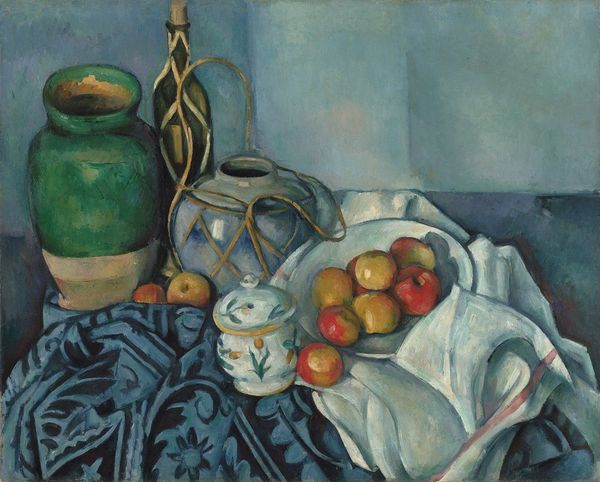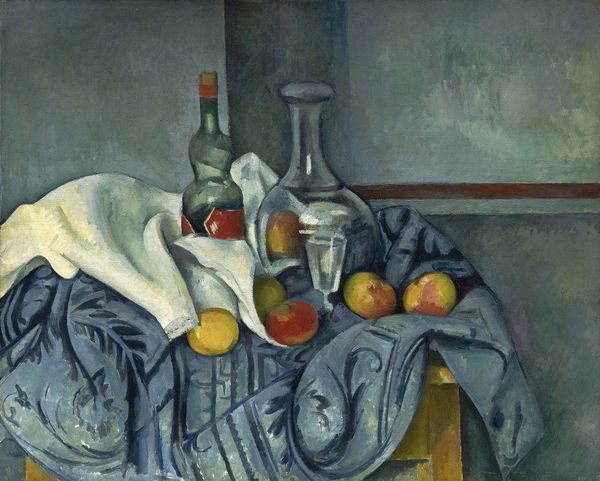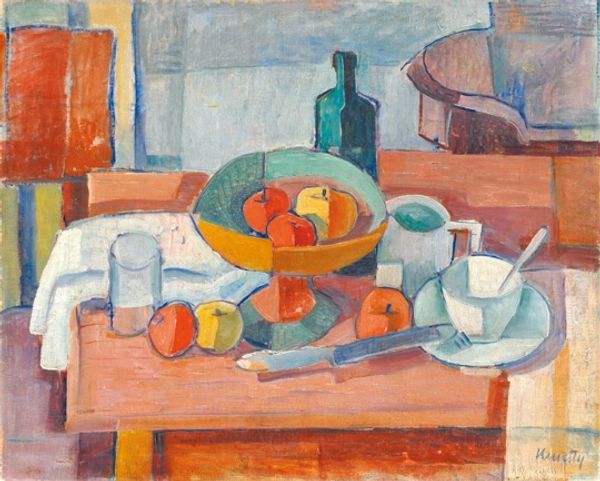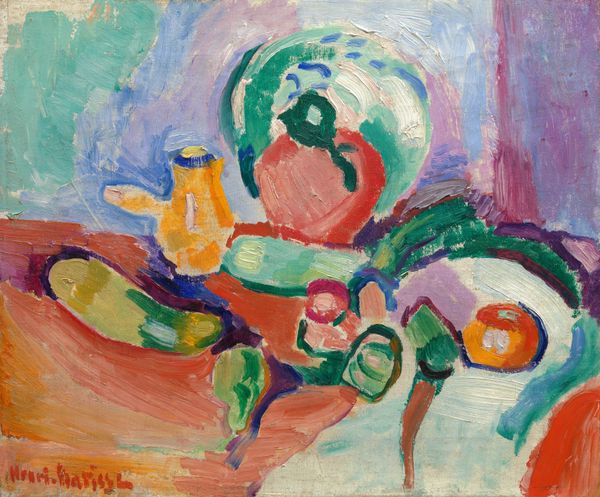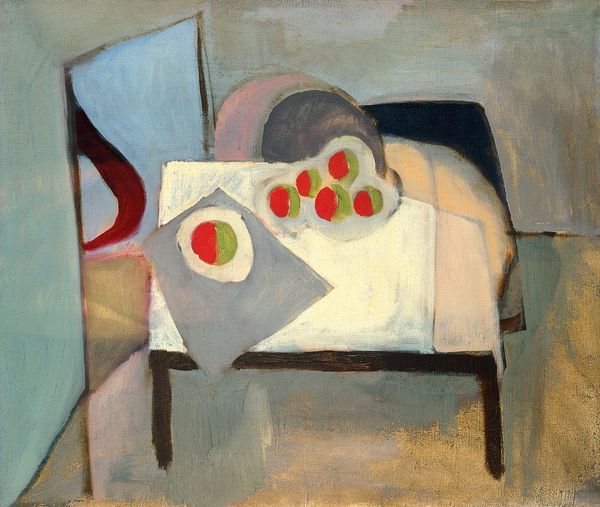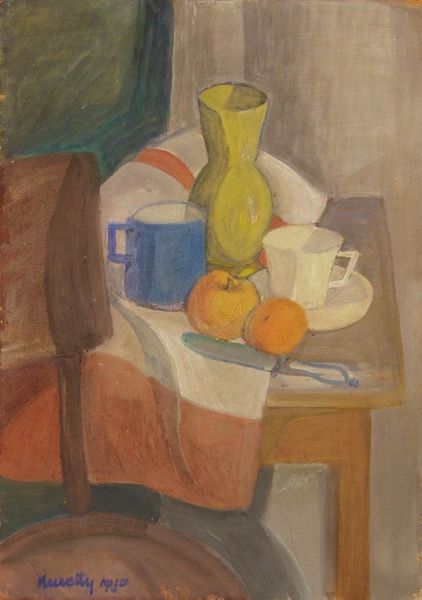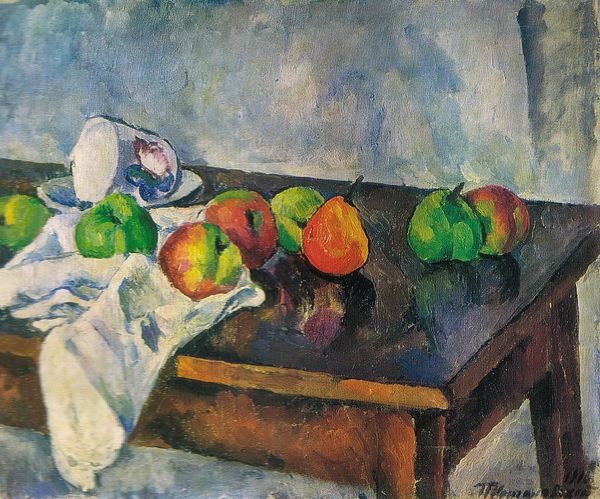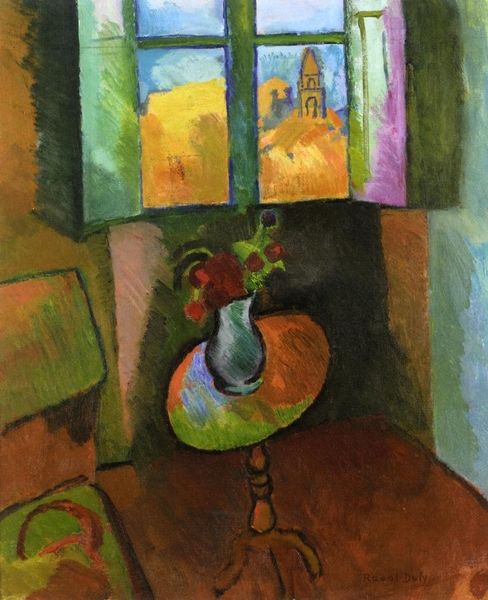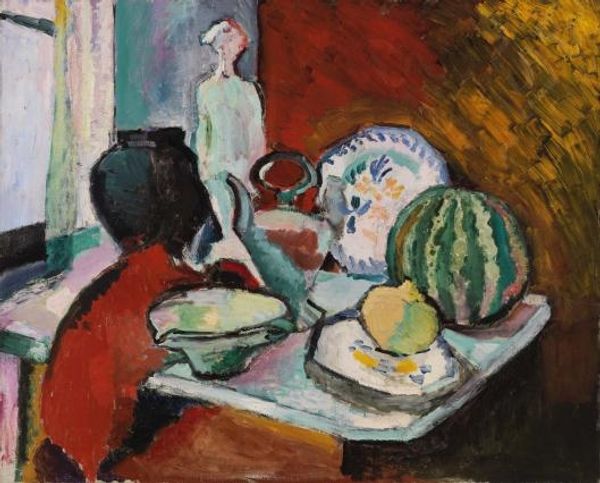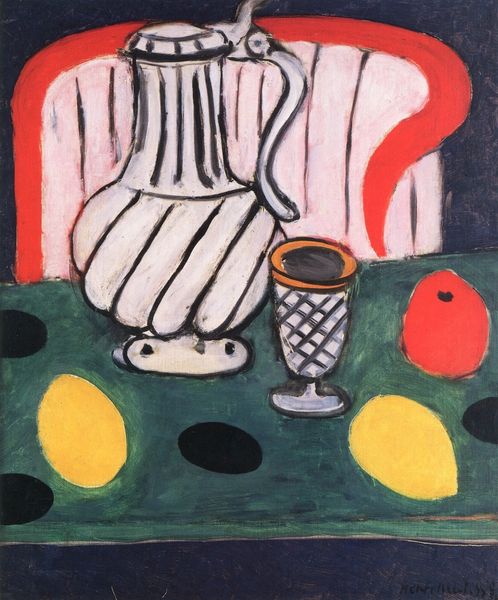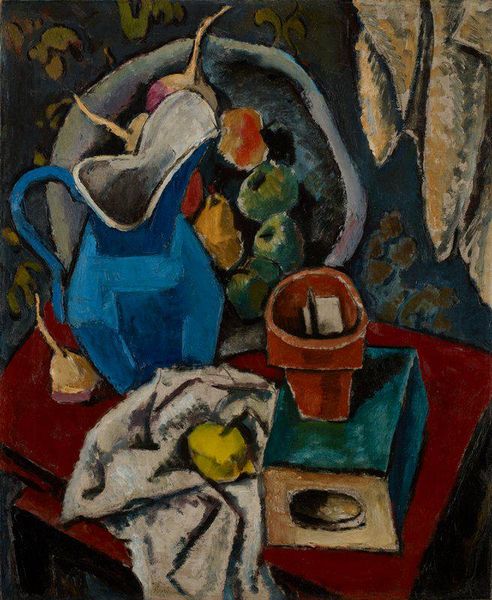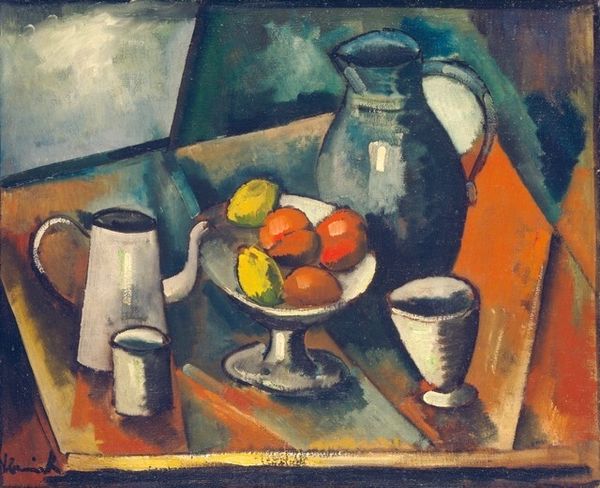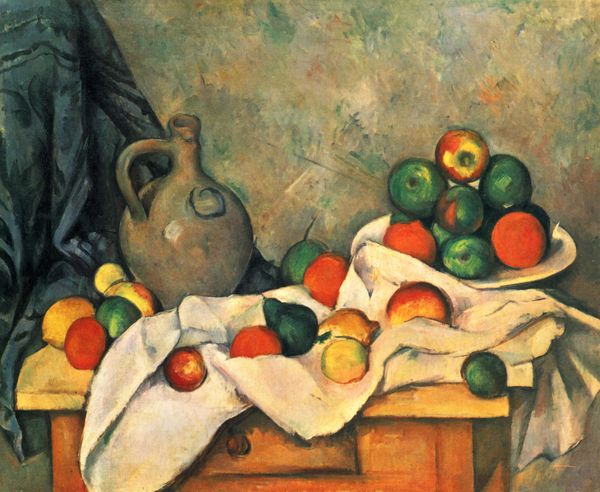
painting, oil-paint
#
painting
#
oil-paint
#
figuration
#
oil painting
#
intimism
#
geometric
#
painterly
#
modernism
Copyright: Kmetty János,Fair Use
Editor: Here we have Kmetty János’ "Still Life with Jug," an oil painting created in 1927. I find its slightly skewed perspective rather intriguing and charming. How do you read this work? Curator: It's interesting that you see charm in the perspective. To me, this piece exemplifies the era's desire to challenge academic artistic traditions and societal expectations surrounding representation. How do the skewed angles affect the spatial relationships and the implied roles of the objects? Editor: I suppose they make the scene feel less formal, more like a personal glimpse into the artist’s space. Are you saying it challenges established views by rejecting perfection? Curator: Exactly. Think about what's absent: the trappings of wealth, overt political symbolism, a romanticized version of everyday life. The "imperfect" angle emphasizes intimacy. Editor: So, its value comes from depicting the mundane, which gives us insight into the time? Curator: In part, yes. The emphasis on ordinary domestic items - the jug, the fruit - moves away from grand narratives. Also, how do the painterly brushstrokes impact our understanding of Kmetty's intentions, and how might they influence or have been influenced by artistic circles and public tastes? Editor: I see. They seem to add a tactile, lived-in quality to the scene. Like we're seeing something truly immediate. Curator: Precisely. This immediate feeling reflects Modernism’s turn to subjective experience. Consider how these objects are positioned, elevating the intimacy and mundane beauty over grandeur. Editor: So, this seemingly simple still life contains layers of social and artistic meaning related to challenging tradition. Curator: Precisely. We must appreciate what Kmetty's image signifies culturally about both challenging what's traditionally appreciated and celebrating everyday items. Editor: It definitely shifted my perspective, it has a depth I initially overlooked. Thank you! Curator: And you've helped highlight how perspective can change our understanding of both the art and its cultural place, an excellent observation.
Comments
No comments
Be the first to comment and join the conversation on the ultimate creative platform.
